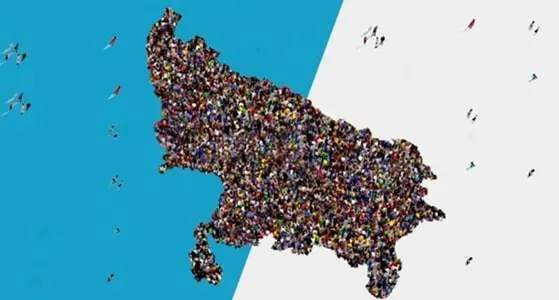Did you know India recently surpassed China and finally became the most populous country on the planet? Yes, that happened fairly recently, and now the 1.4 billion mark is way past us. But when you look at India closely, you’ll find that not every part of India is densely packed with people, instead, there are some prominent areas where the population seems to thrive and grow like crazy. And if you want to understand the population distribution in India, you must look at the state-wise population data for that. And that is precisely what we are onto today because here we will be taking a good look at the top 5 most populated states in India as of 2024. Okay then, here we go.
1. Uttar Pradesh

Now, Uttar Pradesh short for UP, is considered the largest populous state in India, and its capital Lucknow forms the heart of Indian demography. According to the estimated population, this state stands at a huge number like 199,812,341 which is according to census 2011. Still, if we look at the estimated population as of 2023, it is even higher with a number like 24.14 crores. Where 77.73% of the people reside in rural areas and 22.27% live in urban regions. It is a state that has an area of 243,286 square kilometres of land and a population density of almost 828 individuals living in one square kilometre. The sex ratio of the state stands at 912 females per 1000 males. This state is noted for historical landmarks such as Agra’s Taj Mahal and the holy city of Varanasi, among many others.
- Also Read: Top 5 Low Populated States of India
2. Maharashtra
If we go by the available population data from the government of India from the 2011 Census, Maharashtra is no doubt the second most populous state in the country with 112,374,333 people living here. In 2023 it is estimated to 13.16 crores. Along with that, Maharashtra also has a decent population density of 365 per square kilometre. About 54.7% are villagers, while the rest are city inhabitants. Besides being known for the financial might of Mumbai and its diverse cultural heritage, the state goes on to sport a kind of good balance of gender, with 929 females to 1000 males, which aptly shows the inclusive spirit of Maharashtra.
3. Bihar
As per the 2011 census data, Bihar ranks as the third most populous (104,099,452 people) state in the country, but when we look at the recent estimations by some trusted sources, the population number of Bihar seems to surpass Maharastra with a huge number like 126,756,000. There has been an increasing population that has reached the level of 1102 people per square kilometre. The state has great historical bearings since the time of great civilizations aka empires like Magadha and Maurya as well as their varied traditions and cultures.
4. West Bengal
The beautifully standing West Bengal is a state mixed with tradition and modernity, and is the fourth most populous state in India, holding its capital in Kolkata, with a very abundant population of 91,347,736 crores. Out of this, 68.13% are people who live in rural areas, while the remaining 31.87% come from urban locations. With an area of about 88752 square kilometres, it holds a population density of about 1029 persons per square kilometre. No doubt, the rich cultural heritage values festivals of this state like Durga Puja and other contributions made by great intellectuals, including Tagore, who was from this vibrant state of India. Moreover, with a balanced sex ratio of 953 females per 1000 males, West Bengal is where you’ll find the inclusiveness at its peak.
5. Madhya Pradesh
Madhya Pradesh, with its capital Bhopal, ranks 5th among the most populated states in the country, with a population of 72,626,809 people, of which about 72.37% reside in rural areas. The remaining population of 27.63% lives in the urban regions of the state. Area size approximating 308,252 square kilometres and housing a density of 236 people for every square kilometre, Madhya Pradesh sure has a balance of densely packed areas as well as forested areas, which is a standout thing about this state compared to others on the very same list. Moreover, reflecting its social fabric, Madhya Pradesh maintains a balanced sex ratio of 931 females per 1000 males.
Conclusion:
Summing up the journey through the top 5 highest population states of India by the year 2024, it can be said in no clearer words: India houses the most diversified set of populations on the planet. From the bustling cities of Uttar Pradesh with their equal lot of history, to Madhya Pradesh, which seems to strike a fine balance between city life and nature, each state does have its own story. In their exuberant number, these states do not cater not only to the strength of a number in India but also bring forward the needs for sustainable growth, all-inclusive policies, better infrastructure, and the necessities as well as needs of the growing population.

